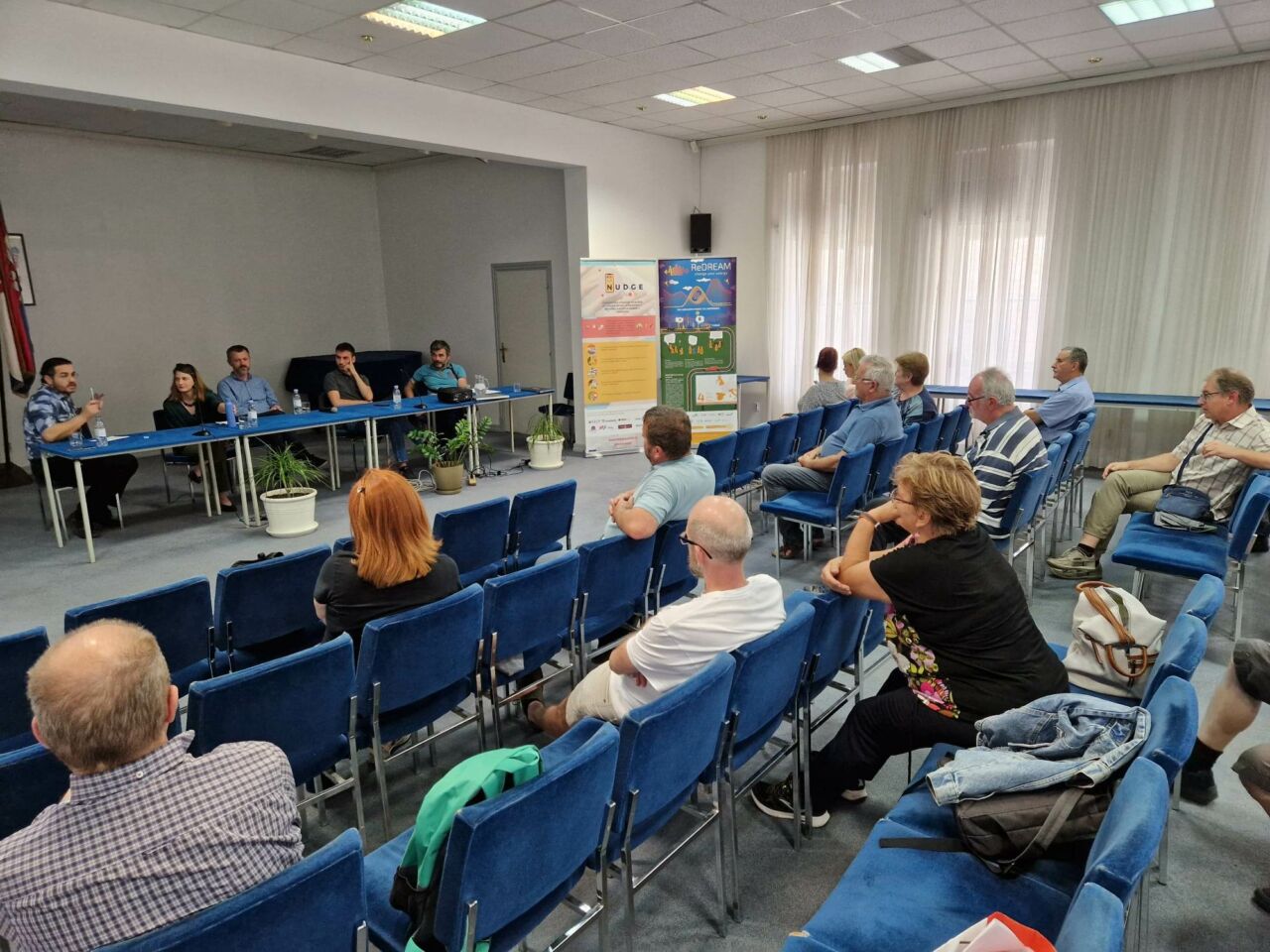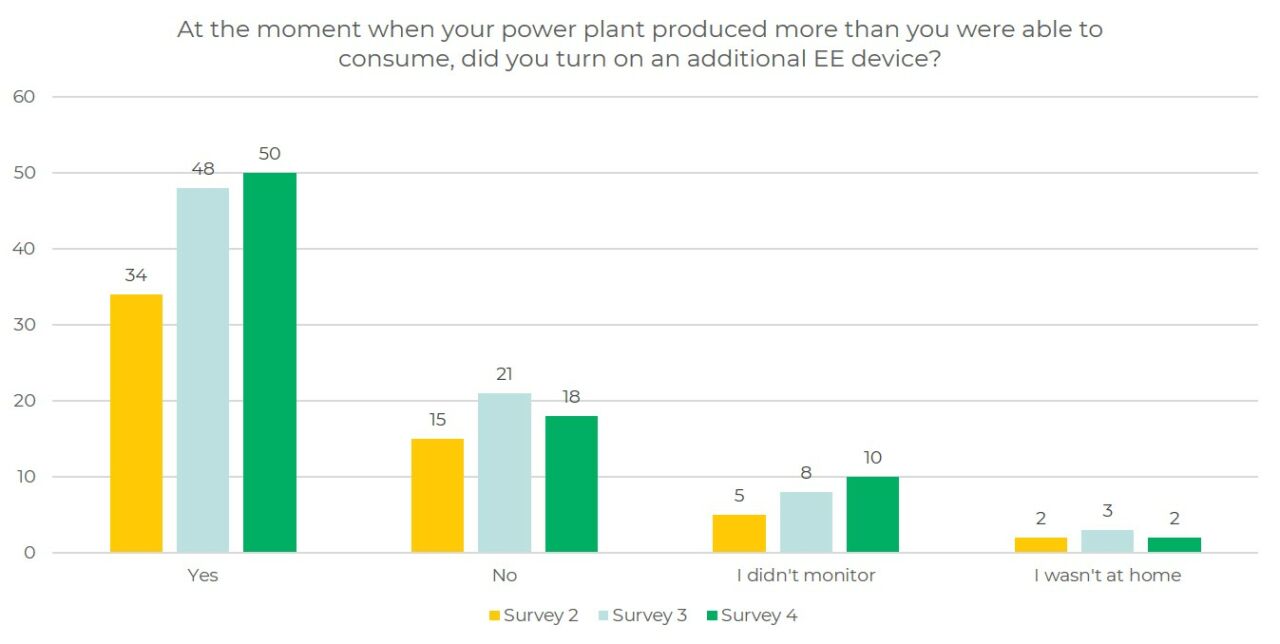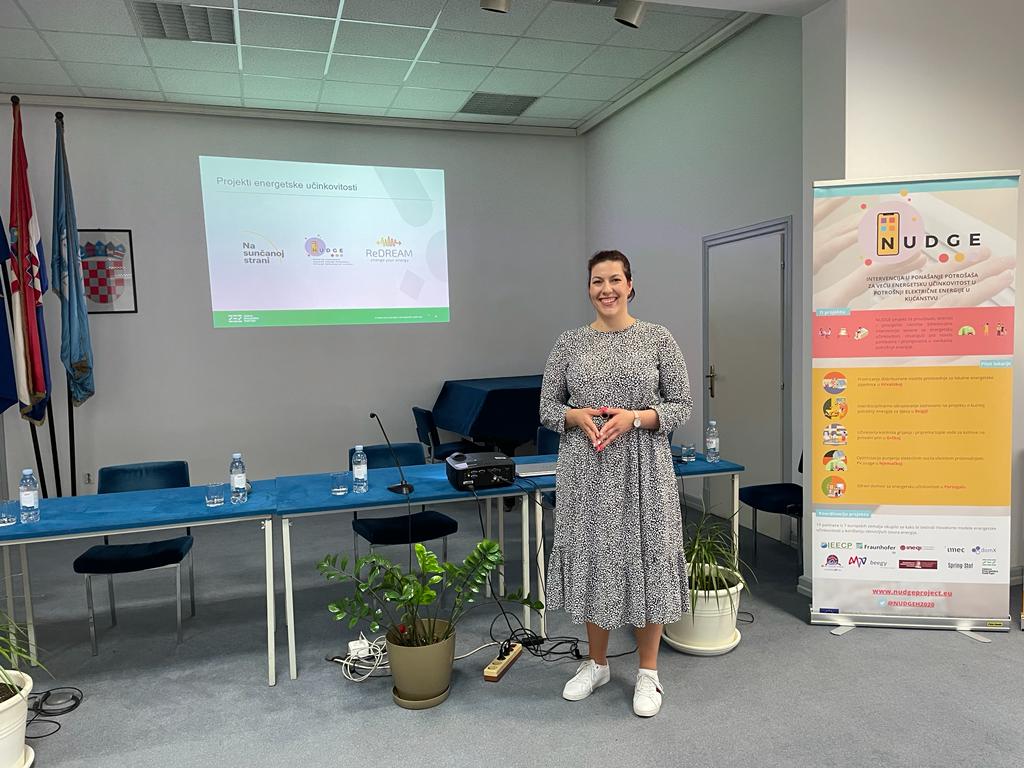How to know when to use the energy produced by your own solar PV plant? Focus on NUDGE Croatian pilot

28 June 2023 – For the owners of household solar PV plants in Croatia, it is not all the same how and when they consume the electricity they produce. Why? Because it affects their electricity bills, the profitability of their investment, and potentially carries the risk of changing from the status “Self-supply Facility User” to the status of “Final Customer with its own Production” which changes the “rules of the game”.
There are several important factors – from sizing of the solar PV plant, to energy-efficient and real-time consumption of the energy it produces. There is a considerable number of consumers with a solar PV plant for self-supply who are unpleasantly surprised when they receive an annual overview of the energy balance of the consumption and production from their electricity supplier. To be able to calculate how much energy and when it is produced, when and how it is used, as well as to consume the energy efficiently, it is necessary to measure production and consumption in real time, not just prior to the billing.
The Green Energy Cooperative (ZEZ, partner in H2020 NUDGE) gathered about 30 owners of small solar PV plants for households’ self-supply in the middle of June in Zagreb to discuss the effective use of energy from solar PV plants. The basis for the discussion was the analysis of the results of consumer behaviour and the use of smart meter devices within research implemented through European projects in which ZEZ participates, including the NUDGE project.
Sunči, an app that provides everything you need to know
In the last research carried out by ZEZ as part of the NUDGE project, 82 solar-powered households from Central Croatia and Slavonia participated. Households were provided with Shelly smart meter devices and Sunči, ZEZ’s app for monitoring the production and consumption of energy from a solar PV plant developed for the research purposes. Through the app, citizens have also received nudges on the efficient use of energy.

As a reminder, Sunči is the first app of this type that shows the measured data of users in the Croatian language. The data is collected through smart meter devices, one is installed in the main fuse board to measure the consumption of electricity in the house, and the other one in the solar PV plant’s fuse board, where the production and consumption of electricity is measured. The aggregated data is analysed, and visual displays are generated, which allow the user to manage the energy consumption in the household in relation to the energy production. More about the app itself and the implementation of the intervention, read here.
What are the results?
The dominant households in the research (27) were households with four members, and of the electrical appliances used, the most prevalent are heat pumps, solar collectors, electric boilers, as well as washing machines and dishwashers. Consumption is highest in the households with a larger number of members who are at home during the day when the production from the solar PV plant is also the highest, whether the household members are retired, do not work or work remotely. In these households, and during sunny days, self-sufficiency is the highest – households fully meet their needs for electricity from their own production.
Additionally, households turned off their PV plants in the period November-January, that is, towards the end of the annual accounting period, to reduce the risk of switching to the less favourable status of a customer with its own production. Some households increased their consumption by changing the heating method (air conditioners, installing a heat pump), activating new electrical devices or even buying an electric vehicle. More than 60 % of users activated additional devices in the household to increase consumption in order not to switch to a less favourable billing method.

All actions that increase consumption due to billing methods do not reflect efficient energy consumption, and indicate the following problems:
- oversizing of PV plants, that is, installation of capacity that exceeds actual household needs;
- illogicality in the methods of billing, which currently limit the possibility of transferring excess electricity to the grid, and consequently extends the period of return of the investment and limits already modest production of electricity from rooftop solar PV plants in households in Croatia.
The solutions are behind the corner
For the sizing of a solar PV plant that will meet the present and the anticipated needs of a household for electricity, it is necessary to take into account the consumption of the household over a period of one year and anticipate changes in the number of electronic devices, as well as members of the household.
The important -and good news- is that it is likely that soon it will no longer be necessary to worry too much about the oversizing of solar PV plants in Croatia, that is, about the transition to the status “Final Customer with its own Production”. Current amendments to the Croatian Law on Renewable Energy Sources and High-Efficiency Cogeneration propose the abolition of the change in the status of “Self-supply Facility User” when, at the end of the calendar year, they deliver more energy to the grid than they have taken. Through amendments to the relevant laws, it is also necessary to enable collective self-supply. That would make it possible to share excess energy with a nearby neighbour who does not have the conditions to install their own solar PV plant, but without the need to establish a new legal entity, and who in such circumstances would also have the status of a self-supplier.
Detailed monitoring of production and consumption is key to effective management
The most important thing in the research of the NUDGE project is that all citizens who had the opportunity to easily monitor production and consumption through the Sunči app managed their consumption more efficiently and realised that it is important not only how, but also at what time the energy is consumed. Stimulating interventions were also positively accepted in the group that participated in the research, but there were no significant differences compared to the control group.

At the end of ZEZ’s gathering, it was summarised that the owners of solar PV plants should acquire the habit of monitoring production and consumption, and with smart meter devices and applications such as Sunči, have insight into the detailed level of household consumption. It will no longer be enough to rely only on data from the monthly electricity bill, which does not contain information on when energy is consumed. It is expected that the balance of production and consumption will be measured at the level of 15 minutes for the purposes of accounting for households, and this will require drastic changes in our behaviour or additional investment in batteries for energy storage. The battery enables balancing consumption and will be an integral part of the solar PV plant. Energy communities are also an important option, which will be able to sell excess energy for a higher amount than what the supplier currently pays to households for excess delivered to the network, either to a neighbour or on the market.
With such researches and discussions, ZEZ’s goal is to increase the awareness of existing and future owners of solar PV plants about the advantages and importance of actively monitoring the production and consumption of energy from a solar PV plant, and to introduce them to the technologies which makes that possible. ZEZ also does this through the non-profit service nasunčanojstrani.hr and the digital Solar Literacy course. With ZEZ’s help, find out everything you want to know about life on the sunny side in Croatia!
***
The event “Efficient Use of Energy from a Solar Power Plant” took place as part of the NUDGE and ReDream projects. These two projects are part of the portfolio of research projects that ZEZ carries out in cooperation with several European partners and are financed from the European Union’s Research and Innovation Program Horizon 2020.
Article in Croatian: https://www.zez.coop/kako-znati-kada-trositi-energiju-proizvedenu-vlastitom-solarnom-elektranom/
